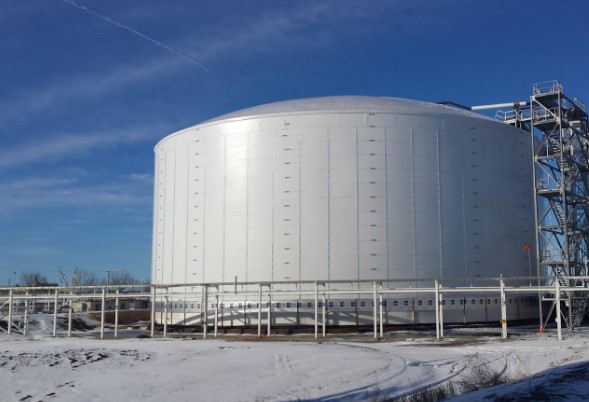In the heart of Alberta’s thriving oil sector, efficiency isn’t just a goal; it’s a necessity. Every aspect of operations, from extraction to processing, demands streamlined processes and infrastructure that can withstand the rigors of the industry. Among the crucial components of this infrastructure are oilfield buildings. These structures serve as vital hubs for operations, providing shelter, workspace, and logistical support in remote and challenging environments. This blog explores the multifaceted role of oilfield buildings in enhancing efficiency within Alberta’s oil sector, highlighting their impact on safety, productivity, and overall operational effectiveness.
The Role of Oilfield Buildings in Remote Operations
Oilfields in Alberta are often located in remote, harsh environments where weather conditions can be extreme. Oilfield buildings Alberta provide essential shelter and workspace for personnel, protecting them from the elements and ensuring operations can continue uninterrupted. These buildings serve as central hubs where equipment can be stored, maintained, and deployed efficiently, reducing downtime and optimizing workflow.
Enhancing Safety Standards Through Purpose-Built Structures
Safety is paramount in the oil sector, and oilfield buildings in Alberta are designed with stringent safety standards in mind. They offer secure environments for workers to conduct operations without compromising their well-being. From fire-resistant materials to advanced ventilation systems, these buildings are equipped to handle the unique hazards associated with oilfield work, mitigating risks and ensuring compliance with safety regulations.
Supporting Operational Continuity in Challenging Conditions
Alberta’s oil sector operates year-round, facing challenges ranging from freezing temperatures in winter to scorching heat in summer. Oilfield buildings are engineered to withstand these extremes, providing a stable environment for critical operations regardless of external conditions. This resilience is crucial for maintaining productivity and meeting production targets consistently.
Customization Options for Tailored Solutions
No two oilfields are identical, which is why flexibility and customization are key features of oilfield buildings. Companies can design these structures to meet specific operational needs, whether it’s additional storage space, specialized work areas, or accommodation facilities for personnel. This tailored approach ensures that every aspect of the facility contributes to efficiency and operational success.
Logistics and Supply Chain Optimization
Efficient logistics are essential for the smooth functioning of any oil operation. Oilfield buildings serve as logistical hubs where equipment, supplies, and personnel can be organized and dispatched as needed. This centralized approach minimizes transport times, reduces fuel consumption, and enhances overall supply chain efficiency, ultimately lowering operational costs.
Integration of Advanced Technologies
Modern oilfield buildings are not just passive structures; they are integrated with advanced technologies that further boost efficiency. From IoT (Internet of Things) sensors for monitoring environmental conditions to automated systems for energy management, these technologies optimize resource usage and improve operational decision-making. This technological integration is pivotal in maintaining competitiveness in a rapidly evolving industry.
Sustainable Practices and Environmental Responsibility
The oil industry faces increasing scrutiny regarding its environmental impact. Oilfield buildings can contribute to sustainability efforts by incorporating eco-friendly materials, energy-efficient designs, and waste management systems. By minimizing their carbon footprint and adhering to environmental regulations, companies demonstrate a commitment to responsible stewardship while enhancing operational efficiency.
Cost-Effectiveness and Long-Term ROI
Investing in well-designed oilfield buildings is a strategic decision that yields long-term benefits. Beyond immediate operational improvements, these structures offer significant cost savings over their lifespan. Reduced maintenance costs, improved energy efficiency, and enhanced worker productivity contribute to a favorable return on investment (ROI) that strengthens the financial health of oil companies operating in Alberta.
Adapting to Industry Trends and Future Needs
The oil sector is dynamic, influenced by technological advancements, regulatory changes, and market fluctuations. Oilfield buildings are designed to be adaptable, and capable of accommodating future needs and evolving industry trends. Whether it’s integrating renewable energy sources or adopting modular construction techniques for rapid deployment, these buildings ensure that companies can stay agile and responsive in a competitive market.
Collaborative Approach and Industry Leadership
Efficiency in Alberta’s oil sector is not achieved in isolation. It requires collaboration among stakeholders, including suppliers of oilfield buildings who play a crucial role in supporting industry leadership. By partnering with reliable providers, oil companies can access expertise, innovation, and support services that optimize the performance of their facilities, fostering a culture of continuous improvement and operational excellence.
Conclusion
Oilfield buildings are indispensable assets in Alberta’s oil sector, enhancing efficiency through their role in safety, productivity, sustainability, and adaptability. As the industry navigates challenges and opportunities, these structures continue to evolve, incorporating advanced technologies and sustainable practices that redefine operational standards. By investing in purpose-built facilities that meet the unique demands of oilfield operations, companies can achieve significant gains in efficiency, resilience, and long-term profitability, ensuring Alberta remains a cornerstone of Canada’s oil and gas industry for years to come.





